Buy Buddhist Thangka Paintings Online
General Understanding of Thangka Paintings
A Thangka painting isn’t just visual. It’s a prayer unrolled, a still chant that hangs between heaven and hand. Rooted in Tibetan Buddhism, this sacred scroll is painted on cotton or silk, often framed in brocade, and designed not merely to decorate but to meditate upon. Every stroke carries intentionality. Each figure, be it deity, bodhisattva, or mandala, embodies a spiritual transmission. It’s art in the service of awakening, a diagram of the cosmos, a portable altar. Unlike wall murals, Thangkas were meant to travel, bridging nomadic spirit and devotional discipline. Their composition, symmetrical yet flowing, obeys iconographic codes that are less aesthetic than transcendent. Pigments are natural, time-worn, minerals, plants, gold, infused with ritual breath. The canvas, primed and smooth, becomes a surface for silence. When the gaze meets a Thangka, it’s not art appreciation. It’s soul navigation.
What Is A Thangka Painting?
A Thangka painting is a spiritual artefact masked as art. Originating in 7th century Tibet, its essence lies in being a sacred visual scripture. More than its material, cotton or silk, it holds symbolic geometry and precise measurements that are rooted in Vajrayana philosophy. Thangkas are often created under ceremonial supervision, with mantras whispered as outlines are inked. The central figure, Avalokiteshvara, Green Tara, or fierce Mahakala, sits in a lotus of proportioned realms, each detail a coded step toward enlightenment. Its rectangular shape and vertical scroll form are not by chance. They align with cosmological orientation. The final piece is more than pigment on textile. It’s a spiritual map, a practice object, a meditation tool. Not passive decor but a vibrant portal that engages the viewer’s internal gaze. It is tradition with muscle memory, a dialogue of brush and belief, symmetry and surrender.
What Emotions Or Themes Do Thangka Paintings Commonly Portray?
Thangka paintings are emotional reservoirs, distilled not in words but in archetypal forms and sacred colors. Compassion radiates through Avalokiteshvara’s thousand arms. Wisdom rests in the soft gaze of Tara. Ferocity blazes through Mahakala's eyes, embodying wrath not for violence but transformation. These paintings exist in dualities, stillness and motion, serenity and rage, discipline and devotion. The themes unfold like a spiritual opera, birth, death, rebirth, liberation. Mandalas portray the cosmos in concentric symmetry. Yidams embody psychological tools for inner work. Each figure, gesture, and weapon has layered semiotics, a language of mudras, thrones, lotus petals, aura halos. Even the empty space holds breath, allowing the eye to rest and the mind to wander inward. These works whisper in archetypes, using color theory and rhythmic balance to evoke spiritual longing, karmic introspection, or meditative pause. Thangka doesn’t just depict emotion. It becomes the emotion transfigured into divine form.
What Are The Most Recognized Styles In Thangka Painting (E.G., Menri, Karma Gadri, Newar)?
The artistry of Thangka branches into distinct lineages, each with its own visual vocabulary, brush discipline, and philosophical undertones. Menri, the official style of the Gelug school, thrives in clean lines, golden symmetry, and a sense of compact sanctity. The figures are bold, balanced, and central, a deliberate attempt to impose spiritual clarity through structured form. Karma Gadri, in contrast, breathes. Originating in the Kham region, it is known for open landscapes, horizon lines, and atmospheric depth. Figures appear grounded yet ethereal, floating in space, surrounded by clouds, rivers, and celestial geometry. Newar, hailing from the Kathmandu Valley, is ornamental poetry. Dense detailing, jewel-toned palettes, and architectural finesse define it. Deities shimmer with filigree, faces are expressive yet idealized. This style often merges Buddhist and Hindu elements, reflecting Nepal’s syncretic soul. Each school holds its grammar, but all share a reverence for metaphysical geometry and spiritual transmission. In essence, style becomes a vessel for intent.
Why Are Thangka Paintings Still Revered In The Contemporary Art World?
Thangka paintings endure because they don’t simply age. They echo. In a world flooded with the ephemeral, Thangkas remind viewers of timelessness. Their reverence comes not from nostalgia but from how they fold centuries into a still frame. In galleries, they offer a stark contrast. Hand-ground pigments, sacred proportions, deliberate strokes, all stand against digital chaos. Collectors and curators cherish them not just for aesthetic complexity but for spiritual depth. In meditation circles and yoga spaces, they’ve become tools for focus and emotional recalibration. But more than function, it’s their intention, crafted not for trend but for transmission, that holds power. The lineage of master-apprentice still breathes in them. Artists paint not to express, but to align. In today’s art world where originality often overshadows meaning, Thangkas reclaim the place of devotion as discipline. They are not just seen. They are contemplated. That is why they remain, not as relics, but as radiant presences.
Techniques, Mediums and Artistic Tools for Thangka Paintings
Thangka painting was never simply an act of illustration. It was a disciplined ritual, a dialogue between the sacred and the seen. Crafted by hand, these paintings were constructed with purpose and patience, where every tool was an extension of intent and every color a passage between worlds.
How Were Thangka Paintings Traditionally Created?
Thangka paintings were traditionally created through a precise and sacred process. Artists began by stretching cotton fabric across a wooden frame, coating it with a smooth base of lime and yak-hide glue. This surface was then polished with stones to achieve an even skin. Sketches were laid out using charcoal dust and string grids, maintaining exact divine proportions. Each figure, symbol, or mandala was anchored in scriptural accuracy. Natural pigments were slowly layered using fine-tipped brushes made from animal hair, and before the painting began, mantras were often recited to sanctify the act. The entire process was a meditative offering, not merely a visual construction. Once complete, the painting was mounted in brocade silk, sometimes rolled into scrolls for portability. This was not just artwork. It was devotion in physical form.
What Painting Mediums Were Commonly Used In Thangka Eras?
The color in Thangka paintings carried the earth’s silence and the sky’s fire. Artists relied on pigments sourced from natural elements including crushed lapis lazuli for blues, malachite for greens, cinnabar for reds, and conch shell powder for whites. Gold leaf was used to elevate the aura of deities and halos, not for decoration but for spiritual resonance. These pigments were mixed with natural adhesives like tree sap or animal glue to bind them. Vegetable dyes added tonal softness for landscapes and floral designs. The medium was not merely technical. It was symbolic. Every element from gold to soot was chosen not for vibrancy alone but for spiritual weight and symbolic function. The end result was a layered surface that shimmered under candlelight and seemed to breathe under temple shadows.
What Role Did Canvas Wood Or Fabric Play In Thangka Art?
The foundation of Thangka art was as important as the imagery itself. Cotton cloth often handwoven was the primary base chosen for its flexibility lightness and ease of rolling into scrolls. This fabric was mounted on wooden frames during the painting process to ensure tension and precision. In some rare cases wood panels were used especially for permanent temple Thangkas or altar pieces. The fabric once prepared with a lime and glue mixture offered a textured yet smooth surface perfect for holding mineral pigments. The portability of fabric also allowed Thangkas to travel with monks turning each scroll into a wandering scripture. Thus the material was never passive. It supported preserved and elevated the spiritual integrity of the entire composition.
Purchase, Collection & Investment of Thangka Paintings
To purchase a Thangka is to cross a spiritual threshold. It is not a transaction but a gesture of alignment. Collecting these sacred scrolls demands discernment, humility, and patience. Whether it is a vintage piece steeped in incense or a contemporary work crafted by monks in quiet studios, the essence lies in intent. One does not amass Thangkas. One lives with them. They are prayer-bound canvases that hold iconography, time, and mantra. For investors, it is not gold leaf or lineage alone, but vibration—art that breathes. Each piece must speak softly yet undeniably, offering both history and sanctity in a single gaze.
Where Can You Buy Authentic Thangka Paintings?
Authenticity begins with where you seek and why. If you are drawn by aesthetics, you will find reproductions in curated online stores like IndianShelf and art fairs. But if you seek the soul of Thangka, go where incense still lingers. Tibetan monasteries, Ladakhi schools, Boudhanath studios, and old Himalayan collectors' circles. In these places, the artists are not commercial painters. They are vessels. Authentic Thangkas are rarely found on casual marketplaces because they are not just objects. They are visual scriptures. Ensure the seller respects the lineage. Ask who painted it, why, and under whose blessing. True sellers will speak not of price but of process. The more reverence they offer, the more trust you may afford.
How Can You Verify The Authenticity Of A Thangka Painting?
A real Thangka whispers. Its pigments, mineral-based and crushed with care, do not shine artificially but absorb and reflect light like skin. The cloth will feel alive, often aged by smoke and prayer. You will notice precise iconography. Buddha postures must follow canonical rules, not creative improvisation. An authentic piece might bear a consecration stamp from a Lama or monastery. The signature may be absent, replaced by symbols or sacred inscriptions. Use your senses—smell the cloth, feel the texture. It should not feel mass-produced. Some genuine Thangkas even come with a paper of lineage, naming the monastery or teacher who oversaw it. Most of all, it should evoke stillness. If it feels like decoration, pause. If it feels like devotion, listen.
What Makes A Thangka Painting A Worthwhile Investment?
Investment in Thangka goes beyond returns. It is spiritual wealth layered in pigment and patience. Financial value often increases with age, rarity, and the artist’s or monastery's reputation. But what makes it truly worthwhile is its presence. Some art is looked at. A Thangka looks back. As meditation tools, they hold ceremonial energy. Vintage, consecrated Thangkas painted under monastic discipline carry immeasurable weight. They become heirlooms—not just to pass down but to sit with, learn from. Unlike fleeting trends, they gain gravitas with time. The longer they survive, the more they breathe. And in that breath lies their true investment—a silent, sacred dialogue with eternity.
Care, Framing & Preservation of Thangka Paintings
Thangkas are not static. They are meditative rhythms captured in silk and pigment. Their care must reflect that sacred stillness. When not in ceremonial use or display, they should be rolled in silk, gently, away from harsh light and shifting temperatures. Their threads carry breath and stories, vulnerable to both air and absence. Framing them, when necessary, must be done as an offering, not a showcase. To preserve them is to preserve silence. Thangkas demand guardianship, not ownership. It is not about freezing a moment but extending the life of a sacred artifact, allowing it to continue its inward chant across time and space.
How Do You Properly Store And Maintain A Thangka Painting?
The right storage begins with mindfulness. A Thangka, traditionally, is rolled not folded within soft silk or muslin. Never trap it in plastic, for its organic fibers must breathe. Choose a cool, dry environment away from sunlight and moisture, as both are quiet destroyers of pigment and thread. Avoid incense-heavy rooms, despite their thematic charm, as residue may settle. Refrain from touching the painting directly. Use clean gloves or cloth. Periodically unroll and air the piece to prevent mold and ensure elasticity. For vintage pieces, a climate-controlled cabinet or archival box may be necessary. Pest prevention is essential. Cedar wood or natural moth repellents may help. Remember, this is a living scroll. It must rest like a monk between rituals, gently kept, never forgotten.
What Frames And Materials Best Complement The Thangka Aesthetic?
Framing a Thangka is a decision of devotion. If preserved traditionally, it remains a scroll, fluid, ceremonial, transportable. But for modern display, it must be framed without suffocating its soul. The ideal frame uses a silk brocade border in ceremonial red, gold, or blue. These accentuate the deity without distraction. Use open-back frames with spacers. Glass should not touch pigment. Opt for non-reflective, UV-resistant glass if necessary, but remember, Thangkas were not meant to be imprisoned. A wooden dowel, sandalwood, teak, or rosewood, at the base retains ritual authenticity. Let it hang slightly loose to maintain its air of movement. The framing should suggest presence, not power. Humility is the design.
Can Old Thangka Paintings Be Restored Without Losing Their Original Feel?
Yes, but only through hands that respect silence. Restoring a Thangka is not artistic renovation. It is spiritual conservation. It requires someone who reads iconography like scripture. Repairs must blend pigment by pigment with the original mineral palette, sourced or hand-ground. Tears in silk are mended with invisible stitching, not masked. Borders are replaced with fabrics that echo the old, not replicate, but resonate. Restoration is not erasure of time but reverence to its passage. A restored Thangka should not appear new. It should appear renewed, weathered but strong, just as the monks who painted it intended. The goal is not aesthetic correction but sacred continuity.
What Are Common Damages Thangka Paintings Suffer Over Time?
Time, while sacred, is rarely kind. Thangkas suffer from sunlight, fading reds and blues that once sang. Humidity frays silk edges, encourages mold, and weakens the binding threads. Moths feed on the organic canvas. Dust clings to creases. Careless rolling causes cracks in the paint. Often, it is absence that harms the most, a forgotten Thangka fades not just in color, but in essence. Some damages manifest slowly, stiff scrolls, pigment flaking, gold turning pale. Each sign is a sigh, a request to be remembered. But in sacred care, even these scars become part of the narrative, rendering the Thangka not ruined but revered.
Home Decor, Styling & Mood Setting With Thangka Paintings
Thangka paintings are not just decorative. They are invocations. Their detailed iconography, hand-ground pigments, and sacred geometry awaken a room’s breath. In a living space, they stir serenity. In a study, they bring clarity. In a hallway, they act as transitional energy points. Their presence transforms the mundane into ritual. Each color narrates intention. Lapis blue for depth, vermillion for transformation, gold for divinity. When framed within raw wooden borders or left as scrolls, their visual cadence echoes chants, not trends. A Thangka doesn't shout. It resonates. A rhythmic visual mantra pulling the room’s energy into quiet balance and thoughtful flow.
How Can Thangka Paintings Influence A Room’s Ambience Or Tone?
Thangkas carry not just imagery but frequency. Every line etched and color applied is deliberate, guided by a centuries-old codex that maps spiritual ascension. Their presence in a room instantly anchors energy, transforming chaos into contemplation. A Green Tara painting evokes compassion and activity, ideal for living areas needing warmth and movement. A Medicine Buddha in a study sharpens focus, aligning intellect with healing. The tonal quality isn’t superficial. It's a sensory recalibration. Rooms shift from being spaces of function to fields of feeling. Thangkas ground wandering energy and invite presence, subtly changing how one breathes, thinks, or even pauses within that room.
What Interior Styles Pair Well With Thangka Artwork?
Thangkas naturally pair with spaces that honor detail, texture, and intention. Bohemian settings embrace them like stories, fringed fabrics, terracotta tones, woven baskets. Zen-inspired rooms use them as focal silence, a single Thangka framed in clean symmetry beside raw wooden shelves and white walls. In eclectic interiors, Thangkas bring a grounding thread, cutting through visual noise with sacred order. Even minimalist rooms benefit. The ornate Thangka becomes the only voice, unchallenged and luminous. Avoid cluttered or overly glossy settings as it stifles their breath. Think limewashed walls, linen textures, subtle incense trails. Let the Thangka sing through stillness.
How Do You Choose The Right Thangka Painting For A Living Room, Hallway, Or Study?
Choosing a Thangka is a dialogue, not a purchase. For living rooms, opt for expansive deities like White Tara or Avalokiteshvara, beings that open the heart and harmonize collective energies. In hallways, Mandalas work well. They guide transition, symbolizing journey and orientation. For a study, wrathful deities or Medicine Buddha cultivate focus and intellectual cleansing. Consider the dominant colors. Reds for action, blues for tranquility, greens for growth. The painting should speak to your inner landscape as much as it shapes your outer one. Let it mirror your intent, contemplation, communication, or creative ignition.
Cultural Impact & Historical Legacy of Thangka Paintings
Thangkas are not isolated relics. They are interwoven scrolls of cultural synergy. Carried across Himalayan passes, they absorbed techniques from Indian Pala manuscripts, Nepalese Paubha styles, and Chinese silk traditions. They reflect dialogues across eras, Buddhist teachings meeting Shamanic rituals, monastic quietude merging with courtly patronage. Each Thangka is a nomadic temple, designed to travel, to fold and unfold like memory. They didn’t just preserve myths. They mapped cosmologies, taught doctrines, and trained eyes to see beyond form. Their historical pulse beats through ritual, prayer, and pigment, preserving not just belief but method.
What Is The Historical Significance Of Thangka Paintings Across Civilizations?
Historically, Thangkas functioned as visual scriptures, portable temples meant for meditation, ritual, and teaching. In Tibetan monasteries, they were used as mnemonic devices for initiates, guiding them through complex cosmologies and deity hierarchies. Beyond Tibet, Thangkas linked spiritual exchange between India, Mongolia, Bhutan, and Nepal. Their significance lies in their universality. Despite being rooted in Buddhism, they embody themes of compassion, wrath, wisdom, and transformation, all of which resonate across cultures. They’ve been diplomatic gifts, offerings, even forms of resistance during cultural suppression. Each Thangka is a layered artifact, a convergence of theology, geography, and brushstroke.
How Did Different Cultures Contribute To The World Of Thangka Painting?
Thangka art is a result of collaborative civilization. The Newar artists of the Kathmandu Valley, with their mastery of line and eye for sacred proportion, laid its foundational style. From the Indian Pala Empire came the structure and narrative sequencing, compositional discipline and spiritual hierarchy. Chinese influence added finesse, cloud patterns, silk scroll mounts, and mineral hues. Mongolian adaptations introduced fierce tantric iconography. Thangka isn’t just Tibetan. It’s transnational, shaped by craftsmen, monks, and patrons who transcended borders. Each region didn’t dilute the form. It refined it, embedding its own philosophy and aesthetic into a shared spiritual visual language.
Which Artists Shaped The Evolution Of Thangka Art Movements?
Unlike Western art movements that elevate the individual, Thangka art reveres anonymity. Artists often remain nameless, belonging to lineages rather than legacies. Trained in monastic settings, they saw themselves as vessels, channels of divine geometry, not creators of egoic vision. However, certain lineages stand out, like the Menri tradition in Tibet or the Kathmandu-based Chitrakar families, guardians of Paubha artistry. These artists balanced vision with discipline, devotion with draftsmanship. Their innovation lay in technique, how they ground lapis lazuli, how they layered silk with gold, how they balanced wrath and compassion on one canvas. They shaped the sacred, not the self.
Thangka Paintings vs Other Art Forms
Thangka art doesn’t invite interpretation. It provides instruction. Unlike modern abstract art that explores form through emotional spontaneity, Thangka paintings are meditative blueprints. Every line is a mantra, every form a symbol encoded with teachings. Minimalist art focuses on void and reduction. Thangkas focus on fullness and cosmic mapping. They are not expressions of personality but reflections of universal principles. Abstract art may emerge from personal impulse. Thangkas are born from doctrinal precision. In Thangkas, aesthetics serve purpose. No element is decorative without being symbolic, and no stroke exists without spiritual logic.
How Are Thangka Paintings Different From Modern Abstract Or Minimalist Art?
Thangka paintings embody sacred precision, not artistic impulse. Their form is not free but formulaic, governed by ancient proportions, spiritual systems, and tantric diagrams. Abstract and minimalist artworks invite viewers to interpret. Thangkas demand contemplation, a decoding of embedded meanings. Abstract art plays with emotional ambiguity. Thangkas clarify. They are mnemonic devices, ritual aids, cosmological maps. Even the space within a Thangka is directional. North for wisdom, East for initiation. While abstract works may express mood or rebellion, Thangkas express lineage, continuity, and spiritual function. They are not modernist meditations but timeless teachings in pigment and cloth.
What Sets Thangka Paintings Apart From Digital Art Or Prints?
Thangkas carry breath, literal and spiritual. Handmade with ritual precision, many are consecrated with mantras and blessed before completion. Digital art, however beautiful, lacks this tactile ritual. Thangkas involve sacred materials, pigments made from crushed gems, brushes made from animal hair, and cotton canvases stretched with reverence. Each piece is slow-crafted with meditative presence, not digital tools. While prints may offer accessibility, they lack the aura, the depth, the ritualized intentionality. A handmade Thangka isn’t just seen. It’s felt. It's the difference between incense smoke and a scented spray. One permeates, the other hovers.
How Do Thangka Watercolors Differ From Oil-Based Works?
Thangka pigments are matte, natural, and absorbent, often derived from crushed minerals like malachite, cinnabar, or azurite. They hold earth in their hue. Applied using fine brushes, they demand layering and control. Water-based and fast-drying, they resist correction. Each stroke is a decision. In contrast, oil paints offer flexibility, blending, and gloss. Thangkas reject luster. They seek depth without dazzle. Their colors are contemplative, not theatrical. Where oils seduce with texture and richness, Thangka watercolors pull inward, invoking stillness. The result is not dimensional illusion but spiritual mapping, art as inner cartography, not outer spectacle.
Emotional & Symbolic Value of Thangka Paintings
A Thangka painting is a living, breathing scroll of devotion, a silent prayer in pigment and silk. Emotionally, it serves as a mirror that reflects the inner landscapes of the soul. Symbolically, each brushstroke is like a mantra, each color a channel of energy. To many, it feels like holding an ancestral whisper, its presence grounding like a temple bell in the storm of modernity. Whether gifted, inherited, or collected, a Thangka’s value is layered like a mandala, offering protection, reflection, and sacred resonance. It doesn’t just adorn a space; it consecrates it.
Can Thangka Paintings Serve As Meaningful Gifts For Special Occasions?
Absolutely. Gifting a Thangka is like offering a sacred flame, it’s not about decoration but about intention. Unlike generic gifts, a Thangka is chosen with care, its imagery attuned to the recipient’s spiritual or emotional journey. For weddings, it may symbolize harmony and cosmic balance. For someone beginning a new chapter, it can invoke guidance or courage. Like gifting a compass to a sailor, it tells the receiver, “You are not alone on your path.” The gesture echoes across time, it isn’t just a gift, it’s a blessing wrapped in pigment and silence, carrying the energy of tradition, devotion, and deep reverence.
What Emotional Value Do Inherited Or Family Thangka Paintings Hold?
An inherited Thangka is akin to holding your ancestors’ breath, quiet, warm, and alive with meaning. These are more than antiques; they are vessels of continuity. Often passed from teacher to student, parent to child, they carry accumulated prayers, protective symbols, and spiritual charge. Each crease tells a story, each faded hue remembers a chant. Emotionally, such Thangkas become memory keepers, silent witnesses to generations of faith and family rituals. Owning one is like having a thread that connects your heartbeat to the past, tug gently, and you feel the pulse of those who once stood where you now stand, eyes cast on the same divine figures.
Why Do People Feel A Deep Connection To Thangkas From Past Eras?
Older Thangkas have the power to still time. They feel like spiritual fossils, imbued with layers of meditation, sacred handling, and historical dust. Unlike modern prints, these artworks resonate with a frequency one doesn’t just see but feel. It’s like stepping into an old monastery where the air itself is wise. These pieces hold emotional charge, not because they’re aged, but because they’ve been present, through births, chants, prayers, and grief. They speak through silence, inviting one to not just look, but listen. This connection is primal, like hearing your grandmother’s lullaby, no translation needed, just the warmth of a spiritual lineage whispering, “You belong.”
Frequently Asked Questions (FAQs)
What Defines A Painting As A Thangka?
A Thangka is defined by its ritual essence and form. Think of it as a portable temple. Traditionally, it is painted on cotton or silk, portraying deities, mandalas, or teachings central to Vajrayana Buddhism. It is not art for art’s sake, it’s instructional, meditative, and devotional. The scroll format allows monks and pilgrims to carry it like a spiritual map. Hand-ground pigments made from minerals, stones, and gold leaf give it a sacred visual vocabulary. It's a visual mantra, with every proportion, symbol, and gesture rooted in scripture, designed to awaken the viewer rather than simply please the eye.
Can Thangka Paintings Be Recreated Authentically Today?
Yes, but only by those who walk the same path. Creating an authentic Thangka is like composing a symphony using ancient instruments, you must know the notes, but also respect their spirit. Many artists train under lineage-based guidance in monasteries, where they learn not only technique but sacred geometry, symbolism, and spiritual intention. These are not mere reproductions, they are continuations of a living tradition. Every brushstroke is preceded by a prayer, every color mixed with purpose. When recreated authentically, a modern Thangka carries the same spiritual charge as its ancestral counterpart, bridging past and present through timeless devotion.
How Do You Protect Thangka Art From Light And Moisture Damage?
Thangkas, like sacred scrolls or aged manuscripts, require mindful preservation. Avoid hanging them under direct sunlight, as the pigments, often made from mineral dust or gold, are photosensitive. When not on display, roll the painting with a silk or muslin cover to protect it from humidity and dust. Cedar wood pieces or silica gel packs can help regulate moisture, much like how museums preserve ancient parchment. If framing is necessary, use UV-protective glass. Think of caring for a Thangka like tending a bonsai, small actions of care over time maintain its spirit and shape across generations.
Are Thangka Paintings Still Relevant In Modern Art Scenes?
Yes, and with renewed reverence. In today’s fragmented and hyper-digital world, Thangka paintings offer stillness, a meditative pause. They’re finding homes not just in temples but in galleries, spiritual retreats, and collectors’ spaces. Contemporary audiences value their intricate detail, symbolic richness, and philosophical depth. Artists and curators alike view Thangkas as sacred installations, bridging the divine and the aesthetic. Their relevance lies not in their age but in their purpose. Like calligraphy in minimalist design, Thangkas introduce spiritual gravitas into modern visual culture, reminding us that beauty can still be sacred, and tradition can still breathe within innovation.
Can Thangka Styles Be Used In Contemporary Painting Practices?
Absolutely. Just as jazz musicians borrow from classical scales, contemporary artists are increasingly drawing inspiration from Thangka’s intricate iconography, vibrant palettes, and spiritual geometry. These elements are finding their way into murals, mixed media, and abstract reinterpretations. By infusing sacred motifs with personal expression, artists reimagine Thangka aesthetics without diluting their integrity. This fusion becomes a dance between devotion and innovation. Much like how calligraphy evolved into graffiti in urban spaces, Thangka-inspired forms are migrating beyond monasteries, into street art, modern canvases, and digital installations, transforming the sacred into a shared, visual meditation in contemporary language.


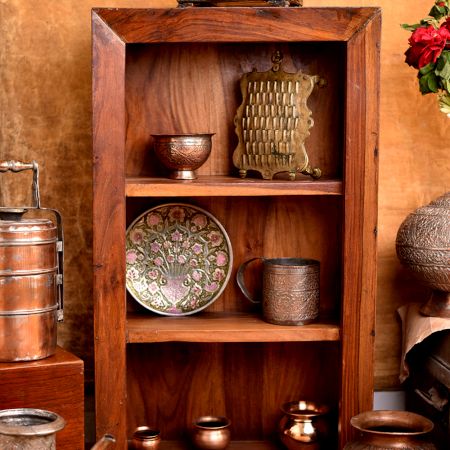
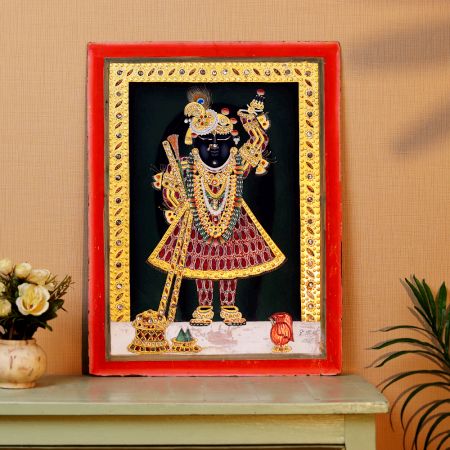
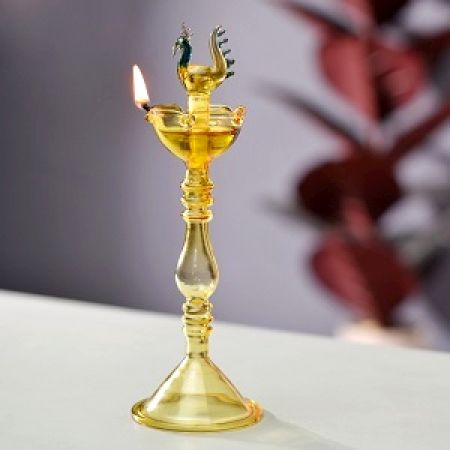
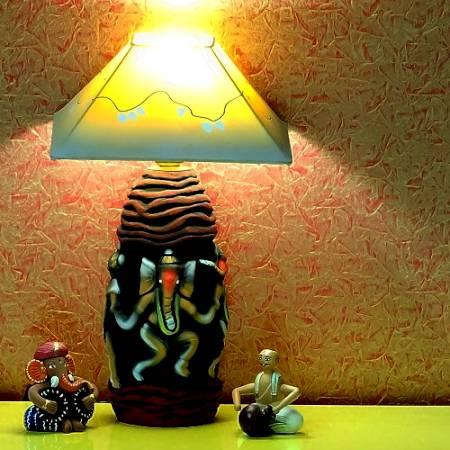
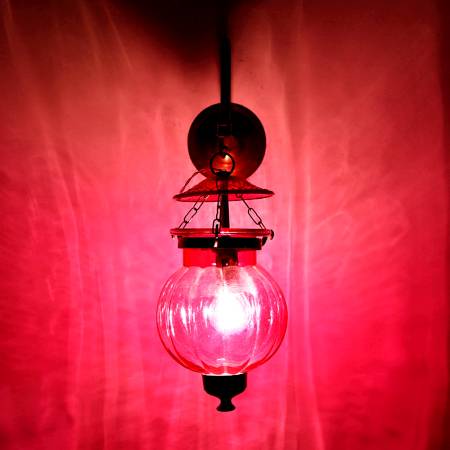

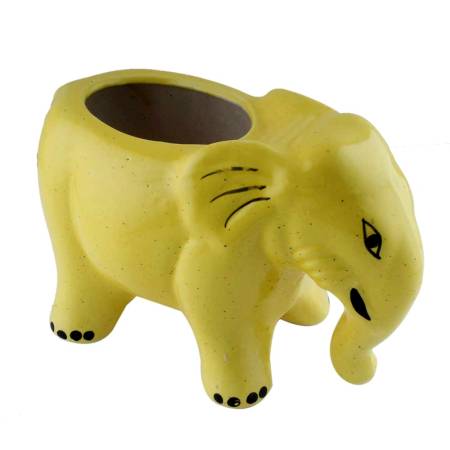
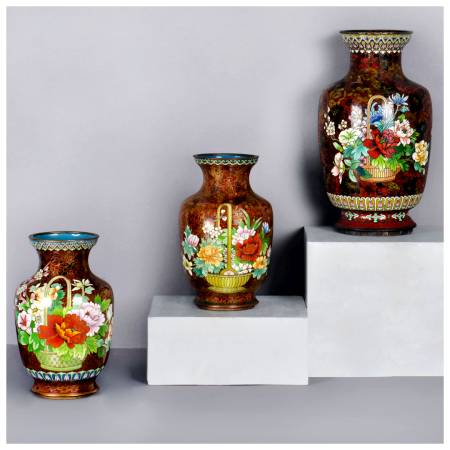
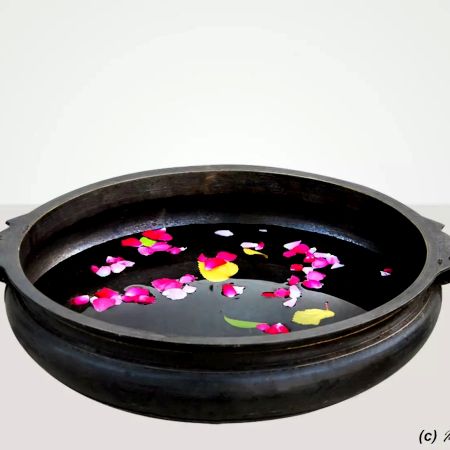

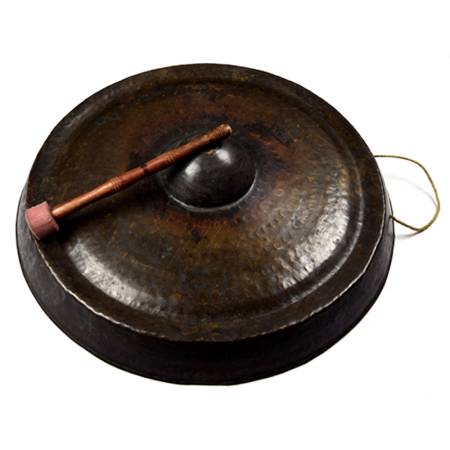


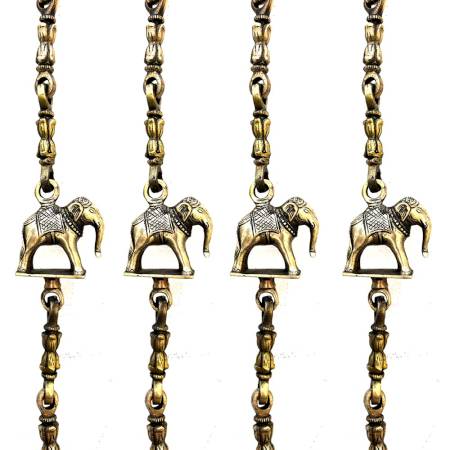
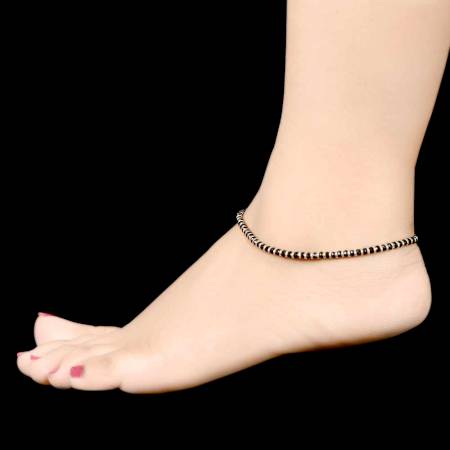
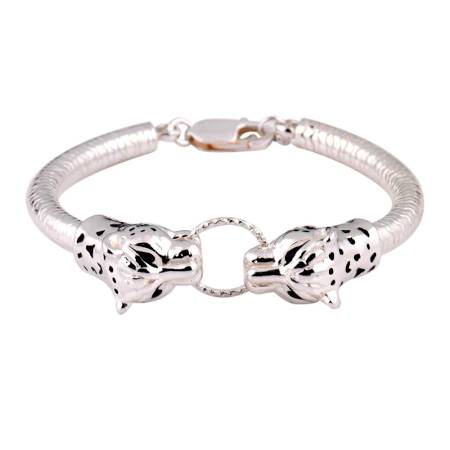
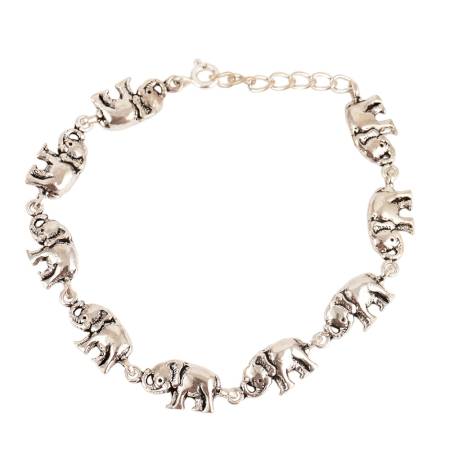
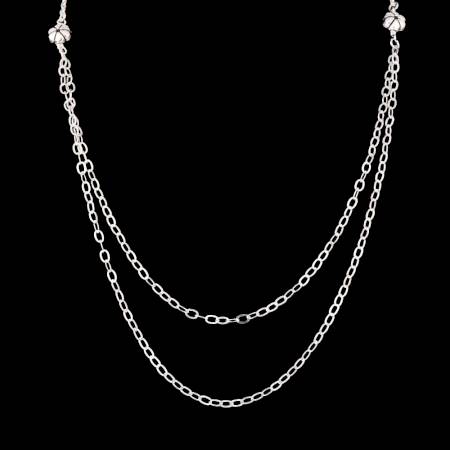
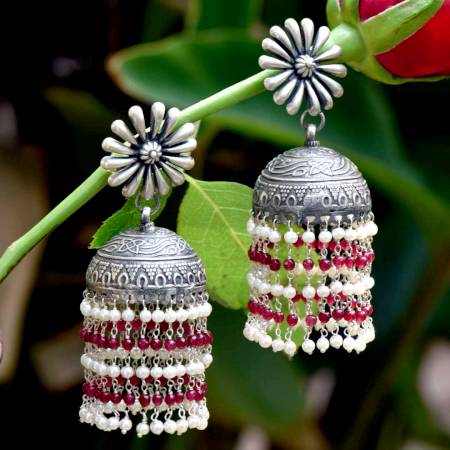
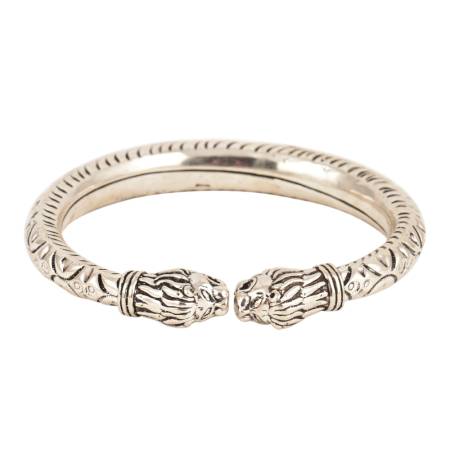
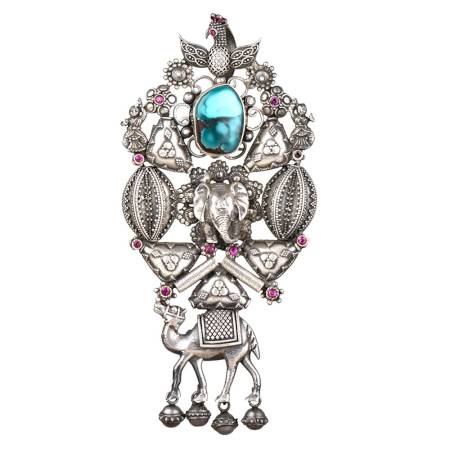
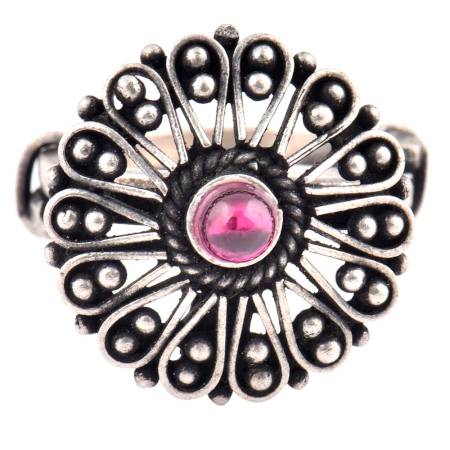
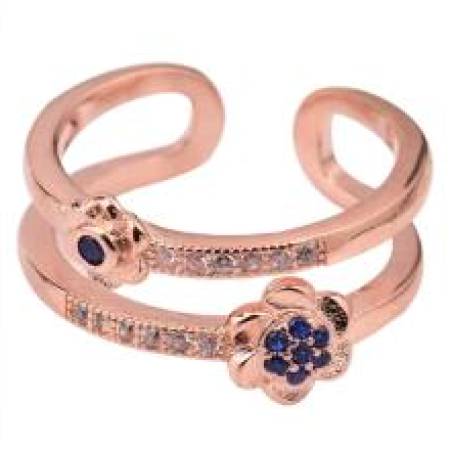






.JPG?ver=1.7)
.JPG?ver=1.7)
.jpg?ver=1.7)
.jpg?ver=1.7)




.JPG?ver=1.7)
.JPG?ver=1.7)
.JPG?ver=1.7)
.JPG?ver=1.7)
.JPG?ver=1.7)
.JPG?ver=1.7)
.JPG?ver=1.7)
.JPG?ver=1.7)
.JPG?ver=1.7)
.JPG?ver=1.7)
.JPG?ver=1.7)
.JPG?ver=1.7)
.JPG?ver=1.7)
.JPG?ver=1.7)
.JPG?ver=1.7)
.JPG?ver=1.7)
.JPG?ver=1.7)
.JPG?ver=1.7)
.JPG?ver=1.7)
.JPG?ver=1.7)
.JPG?ver=1.7)
.JPG?ver=1.7)
.JPG?ver=1.7)
.JPG?ver=1.7)
.JPG?ver=1.7)
.JPG?ver=1.7)
.JPG?ver=1.7)
.JPG?ver=1.7)
.JPG?ver=1.7)
.JPG?ver=1.7)
.JPG?ver=1.7)
.JPG?ver=1.7)
.JPG?ver=1.7)
.JPG?ver=1.7)
.JPG?ver=1.7)
.JPG?ver=1.7)
.JPG?ver=1.7)
.JPG?ver=1.7)
.JPG?ver=1.7)
.JPG?ver=1.7)
.JPG?ver=1.7)
.JPG?ver=1.7)
.JPG?ver=1.7)
.JPG?ver=1.7)
.JPG?ver=1.7)
.JPG?ver=1.7)
.JPG?ver=1.7)
.JPG?ver=1.7)
.JPG?ver=1.7)
.JPG?ver=1.7)
.JPG?ver=1.7)
.JPG?ver=1.7)
.JPG?ver=1.7)
.JPG?ver=1.7)
.JPG?ver=1.7)
.JPG?ver=1.7)
.JPG?ver=1.7)
.JPG?ver=1.7)
.JPG?ver=1.7)
.JPG?ver=1.7)
.JPG?ver=1.7)
.JPG?ver=1.7)
.JPG?ver=1.7)
.JPG?ver=1.7)
.JPG?ver=1.7)
.JPG?ver=1.7)
.JPG?ver=1.7)
.JPG?ver=1.7)
-With-Consort-Thangka-Painting-On-Canvas-PT-402-(1).JPG?ver=1.7)
-With-Consort-Thangka-Painting-On-Canvas-PT-402-(2).JPG?ver=1.7)
.JPG?ver=1.7)
.JPG?ver=1.7)
.JPG?ver=1.7)
.JPG?ver=1.7)
.jpg?ver=1.7)
.jpg?ver=1.7)
.jpg?ver=1.7)
.jpg?ver=1.7)
.jpg?ver=1.7)
.jpg?ver=1.7)
.jpg?ver=1.7)
.jpg?ver=1.7)
.jpg?ver=1.7)
.jpg?ver=1.7)
.jpg?ver=1.7)
.jpg?ver=1.7)
.jpg?ver=1.7)
.jpg?ver=1.7)
-NTP-49-(1).jpg?ver=1.7)
-NTP-49-(2).jpg?ver=1.7)
.jpg?ver=1.7)
.jpg?ver=1.7)
.jpg?ver=1.7)
.jpg?ver=1.7)
.jpg?ver=1.7)
.jpg?ver=1.7)
-Thangka-Painting-NTP-43-(1).jpg?ver=1.7)
-Thangka-Painting-NTP-43-(2).jpg?ver=1.7)
.jpg?ver=1.7)
.jpg?ver=1.7)
.jpg?ver=1.7)
.jpg?ver=1.7)
.jpg?ver=1.7)
.jpg?ver=1.7)
.jpg?ver=1.7)
.jpg?ver=1.7)
.jpg?ver=1.7)
.jpg?ver=1.7)
.jpg?ver=1.7)
.jpg?ver=1.7)
.jpg?ver=1.7)
.jpg?ver=1.7)
.jpg?ver=1.7)
.jpg?ver=1.7)
.jpg?ver=1.7)
.jpg?ver=1.7)
.jpg?ver=1.7)
.jpg?ver=1.7)
.jpg?ver=1.7)
.jpg?ver=1.7)
.jpg?ver=1.7)
.jpg?ver=1.7)
.jpg?ver=1.7)
.jpg?ver=1.7)
.jpg?ver=1.7)
.jpg?ver=1.7)
.jpg?ver=1.7)
.jpg?ver=1.7)
.jpg?ver=1.7)
.jpg?ver=1.7)
.JPG?ver=1.7)
.JPG?ver=1.7)